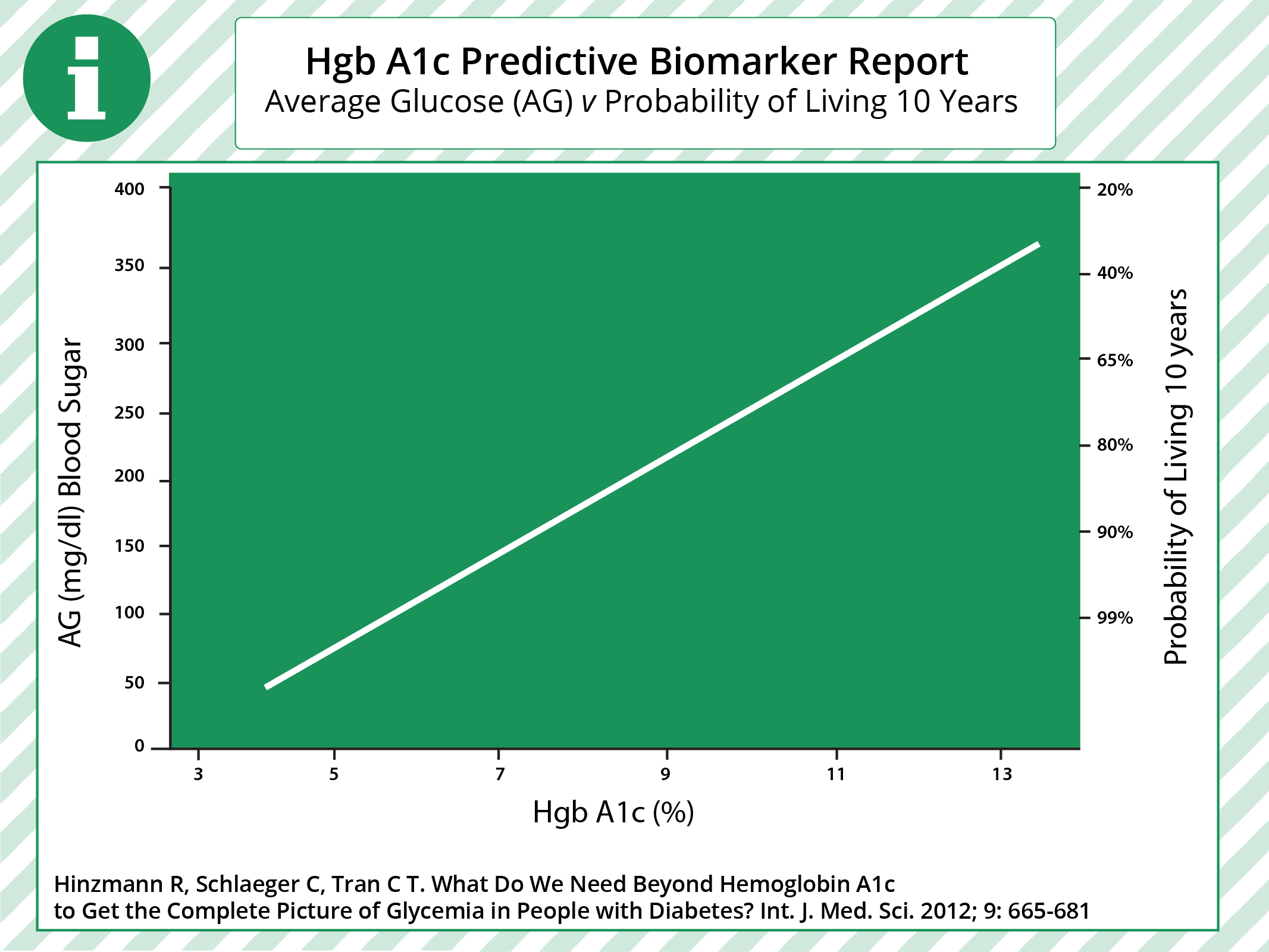Hgb A1c is the test most often used to evaluate blood sugar, diabetic risk, and insulin resistance. A routine blood glucose test measures the amount of glucose in the blood on a given day, at a given time. Blood glucose level reflects only activity over the previous 12 to 18 hours. In contrast, hsHgb A1c indicates the average blood sugar level for the previous three months.
This is important because frequently patients have normal blood glucose on the particular day the test is run, but their hemoglobin A1c could be elevated. Day-to-day blood glucose levels can be distorted by exercise, meal timings, or other medications. More importantly, we do not see high blood glucose levels routinely until prediabetes is quite far advanced. hsHgb A1c gives us a much more reliable indication of actual, immediate risk.
hsHgb A1c is a marker of insulin resistance and when it is elevated, that means the body is no longer properly managing blood sugar levels. When this number is elevated, that also strongly suggests a tendency toward higher inflammation throughout the body. The graph below represents the correlation between Hgb A1c levels, blood glucose levels, and 10 year survival probability.
Research has shown that insulin resistance and prediabetes can frequently be improved with diet and exercise. Hemoglobin A1C provides a reliable test to evaluate the effects of dietary and nutritional support programs.
The least-risk goal for this marker is hsHgb A1c <5 %.

Predictive Biomarkers
Hemoglobin A1c: Measure of efficiency of sugar/insulin/energy conversion. read more
High sensitivity C-Reactive Protein: Repair and inflammation immune status. read more
Cardiac Risk. read more
Test for immune memory/immune response to up to 491 items. read more
Assess mineral need and cell acid/alkaline balance. read more
Vitamin D level for cell communication status. read more
Oxidative stress and antioxidant status in cell envelope (membrane). read more
(8-hydroxy-2′-deoxyguanosine (8OHdG): Oxidative stress and antioxidant status in cell nucleus. read more
